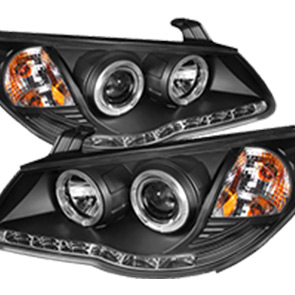Hydraulic Line and Clutch Slave Cylinder Functionality Explained
Understanding the Clutch Slave Cylinder Hydraulic Line
The clutch slave cylinder plays a crucial role in the operation of a vehicle's manual transmission system. Its primary function is to engage and disengage the clutch, allowing for smooth shifting between gears. Central to its operation is the hydraulic line that connects the slave cylinder to the master cylinder. This article will explore the significance of the clutch slave cylinder hydraulic line, the components involved, and common issues related to it.
The Role of the Clutch Slave Cylinder
The clutch system in a vehicle works on the principle of hydraulics. When the driver presses the clutch pedal, it activates the master cylinder, generating hydraulic pressure. This pressure is transmitted through the hydraulic line to the slave cylinder. The slave cylinder then pushes the clutch fork, disengaging the clutch from the flywheel, thereby allowing the driver to shift gears effortlessly. Once the clutch pedal is released, the system returns to its original state, engaging the clutch and allowing power from the engine to flow through the transmission to the wheels.
Components of the Hydraulic System
1. Master Cylinder The master cylinder is located near the clutch pedal and contains a piston that compresses the hydraulic fluid when the pedal is pressed. This action generates pressure in the hydraulic line.
2. Hydraulic Line The hydraulic line is a seamless tube that connects the master cylinder and the slave cylinder. It is designed to withstand high pressure and is typically made from materials such as rubber, reinforced rubber, or metal.
3. Slave Cylinder Positioned near the transmission, the slave cylinder receives the hydraulic pressure from the hydraulic line. It contains a piston that moves when pressure is applied, facilitating the clutch engagement and disengagement process.
4. Clutch Fork The clutch fork is a lever activated by the slave cylinder, which directly engages or disengages the clutch mechanism.
Common Issues with the Hydraulic Line
clutch slave cylinder hydraulic line

Like any hydraulic system, the hydraulic line connecting the master and slave cylinders can develop issues over time. Here are some common problems
1. Leaking Fluid One of the most frequent issues is fluid leakage. This can occur at connection points or within the line itself. Fluid leaks can lead to a loss of hydraulic pressure, making it difficult or impossible to disengage the clutch.
2. Air in the System If the hydraulic line has developed a leak or if it has been disconnected for maintenance, air can enter the system. Air bubbles can compress, which prevents the hydraulic fluid from transmitting pressure effectively. This situation requires the system to be bled to remove the trapped air.
3. Corrosion and Deterioration Over time, the materials that make up the hydraulic line can corrode or deteriorate, particularly in environments where salt or moisture is prevalent. Regular inspections can help identify any signs of wear before they lead to major failures.
4. Blockages Foreign particles or debris can enter the hydraulic line, causing blockages. This issue can prevent fluid from flowing correctly, impacting the performance of the clutch system.
Maintenance and Care
To ensure the longevity and effectiveness of the clutch slave cylinder hydraulic system, regular maintenance is crucial. Vehicle owners should periodically check the fluid levels and inspect the hydraulic lines for any signs of wear, leaks, or corrosion. If any issues are detected, they should be addressed promptly by a qualified mechanic.
Additionally, if you experience any difficulty in shifting gears or notice a spongy clutch pedal, it’s essential to have the system inspected. Ignoring these symptoms can lead to more extensive and costly repairs down the line.
Conclusion
The clutch slave cylinder hydraulic line is a fundamental component in a manual transmission vehicle. Understanding its role and the potential issues that may arise is vital for any vehicle owner. Regular maintenance and prompt attention to problems can ensure that the clutch system operates smoothly, enhancing the overall driving experience. By keeping a keen eye on the hydraulic system, drivers can enjoy trouble-free gear shifting for many miles ahead.
-
Workings of Clutch Pipe and Hose SystemsNewsJun.04,2025
-
The Inner Workings of Hand Brake Cable SystemsNewsJun.04,2025
-
The Secrets of Throttle and Accelerator CablesNewsJun.04,2025
-
The Hidden Lifeline of Your Transmission Gear Shift CablesNewsJun.04,2025
-
Demystifying Gear Cables and Shift LinkagesNewsJun.04,2025
-
Decoding Clutch Line Systems A Comprehensive GuideNewsJun.04,2025
